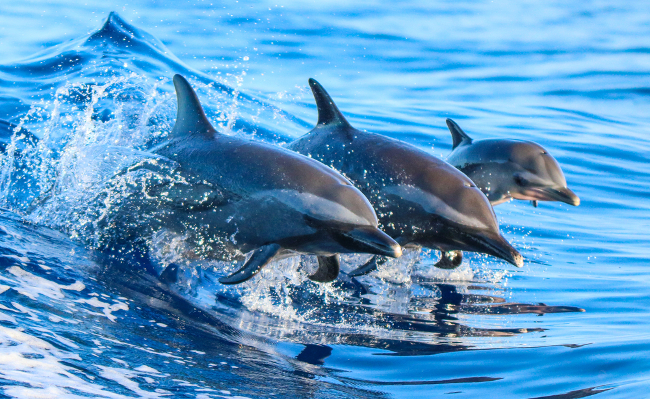
Dolphins are generally beloved by everybody, from Lisa Frank on down. They’re also, as we all know, highly intelligent. But just how intelligent is only now becoming clear as we study them and discover they can not only communicate, they have a whole language structure to do it with.
We’ve known dolphins could talk for a while, as roughly a decade ago Australian scientists figured out how to pick out “word” from the clicks and whistles dolphins use to communicate. We even know that they name themselves as kids. But we only recently developed underwater microphones sensitive enough to be able to tell one dolphin from another. So some Russian scientists threw those microphones into a dolphin tank with two dolphins, Yana and Yasha, and starting listening, only to quickly discover that dolphins communicated not just with single words, but discrete groups of words, and responded to those groups.
In other words, Yana and Yasha were having a conversation using complete sentences. What about is a bit beyond our knowledge of the dolphin language right now. We only know the words for “food,” “hurry up,” and “Dammit Carl!” (OK, maybe not the last one.) We just don’t have a good grasp of dolphin vocabulary, which will be the next step. But we do have a basis for the structure of their language, which as anybody learning a foreign language can tell you, is just as important as the vocabulary.
Considering how the whole “polluting their home” thing might be a bit awkward in a conversation, maybe we should take our time on this one.
(Via Engadget)
